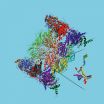(Press-News.org) Inattention, hyperactivity, and impulsive behavior in children with ADHD can result in social problems and they tend to be excluded from peer activities. They have been found to have impaired recognition of emotional expression from other faces. The research group of Professor Ryusuke Kakigi of the National Institute for Physiological Sciences, National Institutes of Natural Sciences, in collaboration with Professor Masami K. Yamaguchi and Assistant Professor Hiroko Ichikawa of Chuo University first identified the characteristics of facial expression recognition of children with ADHD by measuring hemodynamic response in the brain and showed the possibility that the neural basis for the recognition of facial expression is different from that of typically developing children. The findings are discussed in Neuropsychologia (available online on Aug. 23, 2014).
The research group showed images of a happy expression or an angry expression to 13 children with ADHD and 13 typically developing children and identified the location of the brain activated at that time. They used non-invasive near-infrared spectroscopy to measure brain activity. Near-infrared light, which is likely to go through the body, was projected through the skull and the absorbed or scattered light was measured. The strength of the light depends on the concentration in "oxyhemoglobin" which gives the oxygen to the nerve cells working actively. The result was that typically developing children showed significant hemodynamic response to both the happy expression and angry expression in the right hemisphere of the brain. On the other hand, children with ADHD showed significant hemodynamic response only to the happy expression but brain activity specific for the angry expression was not observed. This difference in the neural basis for the recognition of facial expression might be responsible for impairment in social recognition and the establishment of peer-relationships.
INFORMATION: END
Brains not recognizing an angry expression
Responses of children with attention-deficit/hyperactivity disorder
2014-09-25
ELSE PRESS RELEASES FROM THIS DATE:
Chemists recruit anthrax to deliver cancer drugs
2014-09-25
CAMBRIDGE, MA -- Bacillus anthracis bacteria have very efficient machinery for injecting toxic proteins into cells, leading to the potentially deadly infection known as anthrax. A team of MIT researchers has now hijacked that delivery system for a different purpose: administering cancer drugs.
"Anthrax toxin is a professional at delivering large enzymes into cells," says Bradley Pentelute, the Pfizer-Laubauch Career Development Assistant Professor of Chemistry at MIT. "We wondered if we could render anthrax toxin nontoxic, and use it as a platform to deliver antibody ...
Scientists develop tool to help communities stay environmentally and socially 'healthy'
2014-09-25
Geographers at the University of Southampton have developed a new way to measure the 'health' of poor regional communities. They aim to improve the wellbeing of people by guiding sustainable development practices to help avoid social and environmental collapse.
The researchers have pioneered a methodology that examines the balance between factors such as; standards of living, natural resources, agriculture, industry and the economy. The results help identify critical limits, beyond which regions risk tipping into ecological and social downturn, or even collapse.
The ...
Experts at LSTM use modelling approach to assess the effectiveness TB diagnostics
2014-09-25
Experts at LSTM have used a novel modelling approach to project the effects of new diagnostic methods and algorithms for the diagnosis of tuberculosis (TB) recently endorsed by the World Health Organization (WHO), looking at the patient, health system and population perspective in Tanzania.
In a paper published in the journal The Lancet Global Health, LSTM's Ivor Langley and Professor Bertie Squire worked with colleagues from the Institute of Epidemiology and Preventative Medicine, National Taiwan University; National Tuberculosis and leprosy Programme, Tanzania; Department ...
Simple blood test could be used as tool for early cancer diagnosis
2014-09-25
High levels of calcium in blood, a condition known as hypercalcaemia, can be used by GPs as an early indication of certain types of cancer, according to a study by researchers from the universities of Bristol and Exeter.
Hypercalcaemia is the most common metabolic disorder associated with cancer, occurring in 10 to 20 per cent of people with cancer. While its connection to cancer is well known, this study has, for the first time, shown that often it can predate the diagnosis of cancer in primary care.
A simple blood test could identify those with hypercalcaemia, prompting ...
Perfectionism is a bigger than perceived risk factor in suicide: York U psychology expert
2014-09-25
TORONTO, September 25, 2014 – Perfectionism is a bigger risk factor in suicide than we may think, says York University Psychology Professor Gordon Flett, calling for closer attention to its potential destructiveness, adding that clinical guidelines should include perfectionism as a separate factor for suicide risk assessment and intervention.
"There is an urgent need for looking at perfectionism with a person-centred approach as an individual and societal risk factor, when formulating clinical guidelines for suicide risk assessment and intervention, as well as public ...
New findings on how brain handles tactile sensations
2014-09-25
The traditional understanding in neuroscience is that tactile sensations from the skin are only assembled to form a complete experience in the cerebral cortex, the most advanced part of the brain. However, this is challenged by new research findings from Lund University in Sweden that suggest both that other levels in the brain play a greater role than previously thought, and that a larger proportion of the brain's different structures are involved in the perception of touch.
"It was believed that a tactile sensation, such as touching a simple object, only activated a ...
Massive weight loss increases risk of complications in body-shaping surgery
2014-09-25
DALLAS – Sept. 25, 2014 – Patients who lost more than 100 pounds and those who shed weight through bariatric surgery had the highest risk of complications from later surgical procedures to reshape their leaner bodies, a new study from UT Southwestern Medical Center shows.
The study, published in the Aesthetic Surgery Journal, compared surgical complication outcomes for 450 patients who underwent body contouring, a type of surgery to remove excess sagging fat and skin to improve body shape.
"This is one of the first large-scale studies comparing outcomes in patients ...
Natural selection causes early migration and shorter parental care for shorebirds
2014-09-25
All bird migrations are fraught with danger – from the risk of not finding enough food, to facing stormy weather, and most importantly – trying not to be eaten along the way. Raptors such as peregrine falcons (see picture) are the main predators of migratory birds, and huge flocks of congregating shorebirds can be easy pickings. In a paper, just published in Animal Migration, an open access journal by De Gruyter Open, Dr. Sarah Jamieson and her colleagues provide new evidence that shorebird species can adopt substantially different ways of dealing with this predation pressure.
It ...
Spot on against autoimmune diseases and chronic inflammations
2014-09-25
This news release is available in German.
The immune system functions as the body's police force, protecting it from intruders like bacteria and viruses. However, in order to ascertain what is happening in the cell it requires information on the foreign invaders. This task is assumed by so-called immunoproteasomes. These are cylindrical protein complexes that break down the protein structures of the intruders into fragments that can be used by the defense system.
"In autoimmune disorders like rheumatism, type 1 diabetes or multiple sclerosis as well as severe ...
Discovery may lead to better treatments for autoimmune diseases, bone loss
2014-09-25
Scientists have developed an approach to creating treatments for osteoporosis and autoimmune diseases that may avoid the risk of infection and cancer posed by some current medications.
Researchers at Washington University School of Medicine in St. Louis redesigned a molecule that controls immune cell activity, changing the molecule's target and altering the effects of the signal it sends.
Current treatments for bone loss and autoimmune disorders block these molecules and their signals indiscriminately, which over time increases the risk of infections and cancer. The ...
LAST 30 PRESS RELEASES:
Numbers in our sights affect how we perceive space
SIMJ announces global collaborative book project in commemoration of its 75th anniversary
Air pollution exposure and birth weight
Obstructive sleep apnea risk and mental health conditions among older adults
How talking slows eye movements behind the wheel
The Ceramic Society of Japan’s Oxoate Ceramics Research Association launches new international book project
Heart-brain connection: international study reveals the role of the vagus nerve in keeping the heart young
Researchers identify Rb1 as a predictive biomarker for a new therapeutic strategy in some breast cancers
Survey reveals ethical gaps slowing AI adoption in pediatric surgery
Stimulant ADHD medications work differently than thought
AI overestimates how smart people are, according to HSE economists
HSE researchers create genome-wide map of quadruplexes
Scientists boost cell "powerhouses" to burn more calories
Automatic label checking: The missing step in making reliable medical AI
Low daily alcohol intake linked to 50% heightened mouth cancer risk in India
American Meteorological Society announces Rick Spinrad as 2026 President-Elect
Biomass-based carbon capture spotlighted in newly released global climate webinar recording
Illuminating invisible nano pollutants: advanced bioimaging tracks the full journey of emerging nanoscale contaminants in living systems
How does age affect recovery from spinal cord injury?
Novel AI tool offers prognosis for patients with head and neck cancer
Fathers’ microplastic exposure tied to their children’s metabolic problems
Research validates laboratory model for studying high-grade serous ovarian cancer
SIR 2026 delivers transformative breakthroughs in minimally invasive medicine to improve patient care
Stem Cell Reports most downloaded papers of 2025 highlight the breadth and impact of stem cell research
Oxford-led study estimates NHS spends around 3% of its primary and secondary care budget on the health impacts of heat and cold in England
A researcher’s long quest leads to a smart composite breakthrough
Urban wild bees act as “microbial sensors” of city health.
New study finds where you live affects recovery after a hip fracture
Forecasting the impact of fully automated vehicle adoption on US road traffic injuries
Alcohol-related hospitalizations from 2016 to 2022
[Press-News.org] Brains not recognizing an angry expressionResponses of children with attention-deficit/hyperactivity disorder






